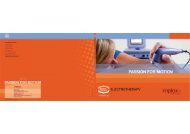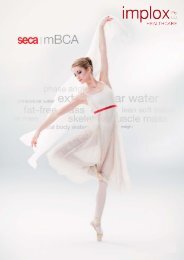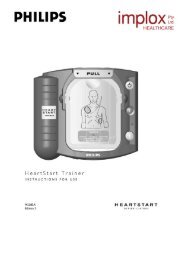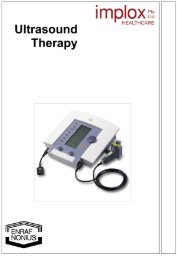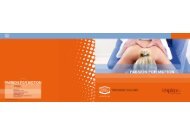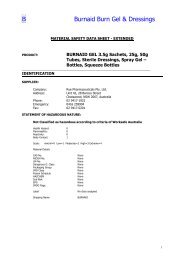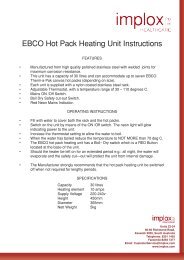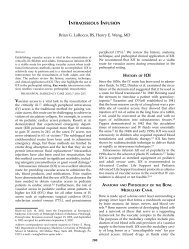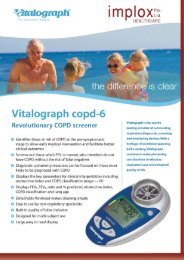Low and medium Frequency Electrotherapy - Implox
Low and medium Frequency Electrotherapy - Implox
Low and medium Frequency Electrotherapy - Implox
Create successful ePaper yourself
Turn your PDF publications into a flip-book with our unique Google optimized e-Paper software.
8 WOUND HEALING<br />
8.1 Introduction<br />
When tissue is damaged, a sequence of complex physiological processes come into action, which should promote<br />
normal wound healing.<br />
In some pathological conditions (e.g. varices, conditions affecting the peripheral arterial circulation, decubitus ulcers)<br />
the physiological wound healing process can be disrupted, resulting in ischaemic ulceration of the skin, followed by<br />
necrosis. This in turn can lead to gangrene, necessitating amputation.<br />
Various techniques can be used to promote wound healing. From the literature, it is not yet clear which of these is the<br />
most effective. Furthermore, the underlying mechanisms of the effects of electrotherapy in accelerated wound healing<br />
are also not yet entirely understood. There is also some discussion of the effects of various current types. In the<br />
U.S.A., considerable use is made of ‘microcurrent’. Although there is (as yet) no unequivocal scientific proof, this<br />
current type is said to produce good results. In addition, good results are apparently obtained with intermittent direct<br />
current, in the form of ‘high voltage stimulation’.<br />
All the claims that have been <strong>and</strong> are being made on this subject indicate that wound healing by electrostimulation<br />
has a great future, but that there is still a lack of unequivocal explanations.<br />
With respect to direct current <strong>and</strong> TENS current types, a number of publications have appeared that are worth<br />
mentioning. Various workers describe a favourable effect of electrostimulation on wound healing (4, 10, 12, 20, 30, 31) . On<br />
the basis of these publications, some guidelines regarding the application of direct current <strong>and</strong> TENS current types<br />
are given in paragraph 8.3 below.<br />
Fig. 33.<br />
The nociceptor <strong>and</strong> its (micro-) environment, Zimmermann (34) .<br />
8.2 The mechanisms of wound healing<br />
During a physiological wound healing process, various substances are released. As it is beyond the scope of this<br />
book to give a complete description of all the complex mechanisms involved in wound healing, we shall confine<br />
ourselves to giving a brief explanation of the working of one of these substances: ‘Substance P’ (SP). This is a<br />
neurotransmitter that plays an important role in the wound healing process.<br />
Substance P has two principal effects (33) .<br />
When tissue is damaged, SP stimulates the mast cells to produce histamine, causing vasodilation. The resulting<br />
hyperaemia causes an inflammatory reaction, <strong>and</strong> is the first stage in wound healing.<br />
35



